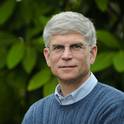
Dataset
Monitoring of vegetation and fire in Florida scrub, flatwoods, and wet prairie in south-central Florida from 1977-2015
(2020)
Description
This data package is comprised of three datasets all pertaining to the impacts of prescribed fires and wildfires on vegetation at 11 permanent transect sites over nearly four decades at Archbold Biological Station (ABS) in south-central Florida. Data were collected between 1977 to 2015 in wet prairies, flatwoods, oak scrub, rosemary scrub, and hickory scrub. The first dataset, cover_data, contains year and month of sampling at a given transect site, the vegetation association type, burn unit, and the percentage cover data for sampled species and bare ground. The second dataset, fire_occurrence, includes the dates of each fire that impacted each transect site, the burn unit of the transect, and the percentage of transect burned. The third dataset, species_information, includes the scientific name, common name, plant family, and nativity of each sampled species. A fourth unpublished dataset provides the GPS locations for all the aluminum posts that mark each of the 11 transects. These data are available from the Archbold data manager. Below we summarize the setup and data collected for each dataset. Cover_data: We determined the percentage cover (i.e., dominance) of each encountered species at 11 vegetation stands including two wet prairies (WS20, WS21), three flatwoods (WS30, WS42, WSP1), and six Florida scrub associations including four oak scrubs (WS26, WSP2, WS24, WS25, the latter two include areas of rosemary scrub), a rosemary scrub (WS27), and a hickory scrub (WS29). Each stand was sampled at selected times, ranging from five to as many as 12 repeated samplings, during the 38-yr period beginning in 1977 and continuing to 2015. Stands were sampled during January (mid-way during the winter dry season) except for sampling four stands in May 1977 and eight stands in July 1977 to document short-term 4-month and 6-month vegetation recovery following the initial January 1977 prescription burn. At each permanently marked transect site, we sampled 200 m using two parallel 100-m transects except at the rosemary scrub stand (WS27) where three 60-m and one 20-m parallel transects were used to restrict sampling to rosemary scrub vegetation. In total, we sampled 21,600 m of vegetation during our study. At each transect at each census, we measured the length of the transect line intercepted by ramets of each species and the lengths of transect that lacked vegetative cover (i.e., bare ground). During January 1977, we determined pre-burn, initial dominance for each species at eight of the 11 stands prior to prescription burning on 21 Jan. 1977. Two additional stands (WSP1, WSP2) that were unburned for an estimated 35 yr. prior to sampling were initially sampled in January 1978. These two “unburned controls” were intended to provide measures of vegetation change during prolonged periods without fire. The 11th stand (WS30) was sampled initially in January 1980 prior to prescription burning on 25 January 1980. Fire_occurrence: Prescribed fires were conducted in the manner outlined in the ABS Fire Management Plan (FMP) (Main, K.N. and E.S. Menges. 1997. Archbold Biological Station: station fire management plan. https://www.archbold-station.org/html/land/firemgtplan.html. Land Management Publication 97-1:1-95). Fires were executed “to mimic, to the degree possible, the natural range of variation in fire-return interval, fire intensity, fire behavior, fire effects, and other characteristics of the fire regime.” While many lighting techniques were used “including back fires, flank fires, strip-head fires, and point-source ignition fires in conducting prescribed burns,” ABS seeks “to burn the majority of many burn units with head fires to mimic presettlement fire intensities.” Lightning ignitions are planned for so “some can be allowed to burn in a controlled manner and, thereby, allowed to affect part of the landscape in a way similar to that which occurred before European settlement.” All fires and their severity were mapped. Aerial photos and ground surveys categorized four severity levels: unburned, lightly burned, moderate-severity burns, and high-severity patches. Fire severity data are available from the Archbold data manager. Species_information: Plant scientific and common names follow the Atlas of Florida Plants https://florida.plantatlas.usf.edu/ as of June 15, 2020. The file species_information provides the Latin name, species authority, common name, and nativity. All species sampled were native Florida plants. Transect locations: Transect locations (which are unpublished) in Archbold’s “West Section” are marked with angle-aluminum pins at 20-m intervals. Each pin is stamped to identify its position within the array of pins (e.g., 100-m pin of the east transect line). GPS coordinates of each pin were recorded with a Trimble GPS unit and are available from the Archbold data manager.
Keywords
- fire ecology,
- evolutionary fire ecology,
- plant ecology,
- endangered species,
- Florida,
- Lake Wales Ridge,
- Fire Management Plan
Disciplines
Publication Date
August 19, 2020
DOI
https://doi.org/10.6073/pasta/adff9897f359712baf4cdb0c4867e040
Citation Information
Abrahamson, W.G. 2020. Monitoring of vegetation and fire in Florida scrub, flatwoods, and wet prairie in south-central Florida from 1977-2015 ver 1. Environmental Data Initiative. https://doi.org/10.6073/pasta/adff9897f359712baf4cdb0c4867e040 (Accessed 2020-08-19).
